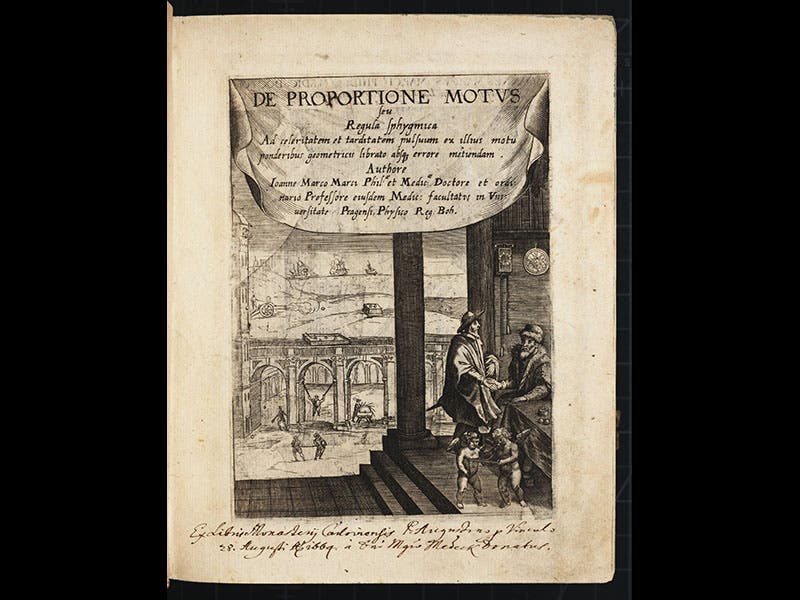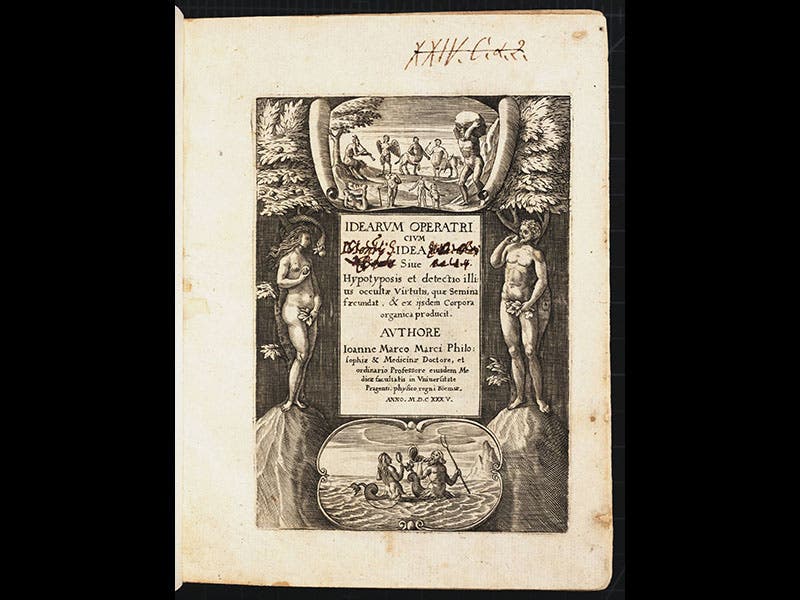Scientist of the Day - Marcus Marci von Kronland
Johannes Marcus Marci of Kronland, a Bohemian physicist, was born June 13, 1585. Marci made a number of original investigations in mathematics and physics and published the results of his work in a half dozen very scarce treatises, all of which we hold here in the Library, which makes us one of the better places to pursue Marci scholarship. Many of his works have elaborate emblematic title pages. We reproduce above the title-page engraving to his De proportione motus (1639; first image), a book on motion and impact; Thaumantius (1648, second image), about optics, color, and the rainbow; and Idearum (1635; third image), on occult virtues. All of these books also have an engraved portrait of Marci, an identical one, so he stays the same age as his books multiply (fourth image).
But Marci is, for better or worse, best known for his role in the saga of the Voynich manuscript. This "most mysterious manuscript in the world" is a 240-page volume that resides in the Beinecke Library at Yale. It dates to the 15th century, contains many fine illustrations of plants and a few other figures, and--this is the mysterious part--is written in a language that is unique and has resisted all attempts at decipherment. We show two sample pages above (fifth and sixth images). No one knows if there is a real text within the cipher, or if the whole thing was a hoax and the writing is just gibberish. The first we hear of the manuscript is a letter that Marci wrote to Athanasius Kircher in 1666, explaining that the manuscript was once owned by the Holy Roman Emperor, Rudolf II, that no one could read it, and that since Kircher was supposed to have cracked the hieroglyphics of ancient Egypt, Marci was sending the manuscript to Kircher. Kircher did not crack the cipher, nor has anyone since. If you would like to try, the Wikipedia article is as good a place to start as any. The entire manuscript is available on Wikipedia Commons. Good luck.
Dr. William B. Ashworth, Jr., Consultant for the History of Science, Linda Hall Library and Associate Professor, Department of History, University of Missouri-Kansas City. Comments or corrections are welcome; please direct to ashworthw@umkc.edu.












